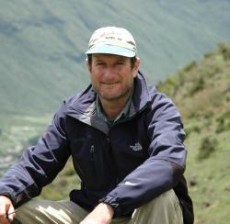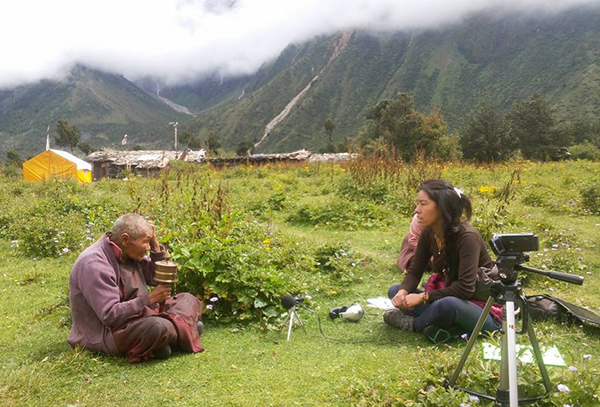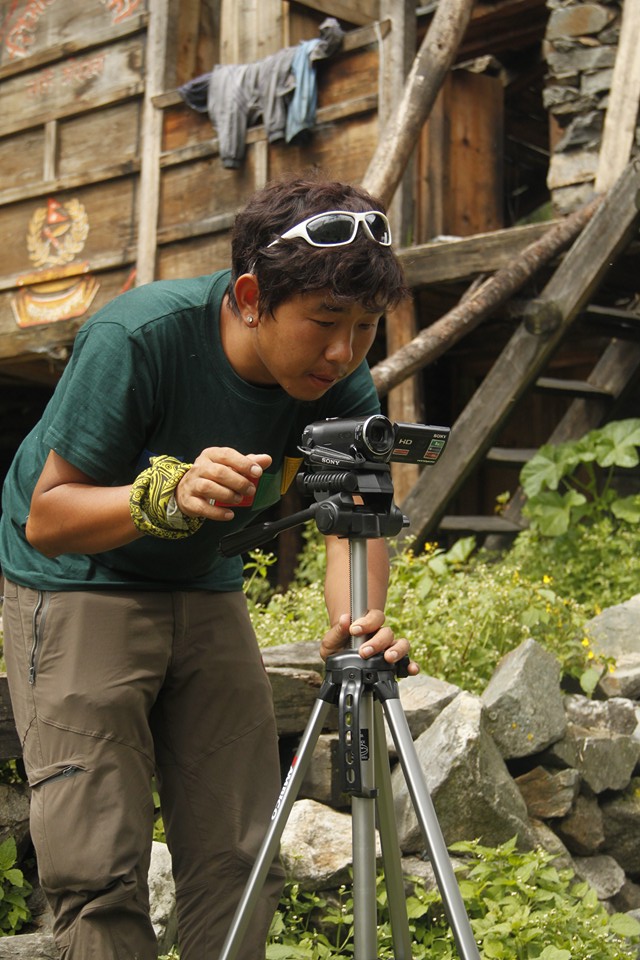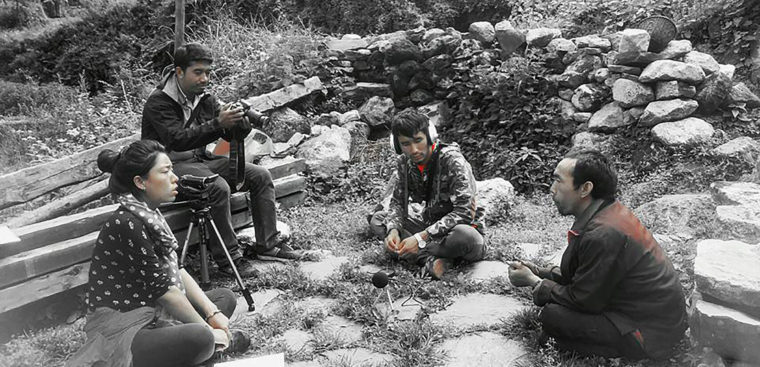The dramatic 7.8 magnitude earthquake that hit Nepal one year ago left behind a landscape littered with crumbled homes, buildings and roads. While infrastructure can be rebuilt, the disaster may have a more lasting impact on the nation’s culture, suggests an interdisciplinary team studying the aftermath as part of a rapid response grant from the National Science Foundation (NSF).

“We are witnessing how, and to what ends, people are making choices about rebuilding, and we are also learning very important lessons about the different ways that health and wellbeing — including mental health issues — are articulated in the wake of such an event,” said project researcher Geoff Childs, associate professor of anthropology in Arts & Sciences at Washington University in St. Louis.
Childs’ co-investigators for the project include include Sienna Craig, a medical anthropologist from Dartmouth College and two linguistics scholars: Kristine Hildebrandt from Southern Illinois University-Edwardsville (SIU-E) and Mark Donohue from Australian National University.
The research team is collaborating with local researchers in three mountain districts in central Nepal to see how people from these areas understood the earthquakes; how they’re rebuilding; and how they relate to the lingering threat of extreme environmental disasters.
The project has a special focus on documenting the quake’s impact on local languages and minority cultural practices, some of which were already in danger of disappearing as the modern world makes inroads into isolated mountain communities.

Between 100 and 115 distinct languages are spoken within Nepal’s borders. The three districts where the NSF-supported team is working all feature languages and cultures, under threat of extinction, a situation the quakes exacerbated.
Natural disasters can destabilize the linguistic landscape and diversity of an area. Nepal’s earthquake displaced entire populations, and some people may never return to their home villages, just as many residents of New Orleans resettled elsewhere after Hurricane Katrina. Studying these quake-related language changes may offer a window into the broader cultural impact of extreme events.

“One of the most interesting dimensions of this project is its collaborative nature,” Childs said.
“When we think of collaborative research, the framework that comes to mind is scholars from different universities or disciplines bringing their skills to bear on a topic of common interest. In our case, the collaboration is not just across universities (four) and disciplines (anthropology and linguistics), but also includes young Nepali researchers who were instrumental in everything from study design to data collection and interpretation.
“The project fits within an investigative model now referred to as participatory research or collaborative ethnography,” Childs said.
Each member of the research team has ongoing research projects in Nepal that involve local participants. Hildebrandt was the only team member available to go to Nepal and initiate the project with the help of young Nepali researchers.
“From the outset, we decided to entrust these young people, who have considerable experience working under our supervision, to journey through the affected areas and conduct all of the interviews,” Childs said. “Their goal was to video record people talking about their personal experiences during the earthquake, thoughts on causality, and comments on post-disaster response efforts.”
Thus far, the researchers have collected interviews and stories in 11 different Nepalese languages documenting local understanding of the disaster. These anecdotes are helping researchers better understand what locals do when a tragedy strikes and why they do it — insight that may help policymakers prepare local populations for the next emergency.
Preliminary findings confirm that local residents invoke a wide range of cosmological reasons for the quake. The local people believe earthquakes happen “when things fall out of balance,” said SIU-E’s Hildebrandt. “Earthquakes are viewed as karmic payback for too much modernizing, or for sin, or for taking economic assistance from China.”
These belief systems endanger people’s lives when they lead to unsafe, even fatal, reactions during earthquakes. Understanding these factors can improve local preparations before disaster strikes and can better inform disaster response practices.
While data from hundreds of project interviews is still being compiled, the research team plans to make all of it available to the public. The issues they’re studying — how the lens of culture affects the way people view disasters and the effects those catastrophes can have on culture and language — stretch far beyond Nepal. Their findings will inform responses to other disasters, including major earthquakes that recently struck Japan and Ecuador.
A better understanding of the emotional trauma that quakes inflict may spur the development of disaster recovery strategies that save time, money and lives, researchers said.

Comments and respectful dialogue are encouraged, but content will be moderated. Please, no personal attacks, obscenity or profanity, selling of commercial products, or endorsements of political candidates or positions. We reserve the right to remove any inappropriate comments. We also cannot address individual medical concerns or provide medical advice in this forum.